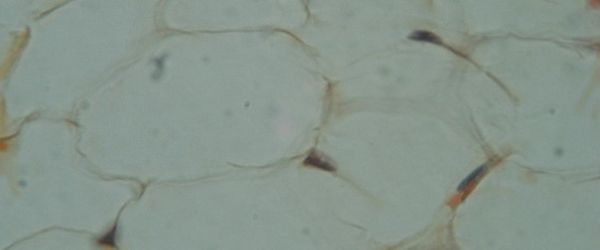If you ever used a site-directed mutagenesis kit or ligation-independent cloning, then you also used restriction enzyme Dpn I. But what does it do and more interestingly, why?
Restriction enzymes and methylases: the yin and yang of bacteria
Usual restriction enzymes, the toolkit of genetic engineering, are one half of the “yin and yang” pair of enzymes, which together with a methylase make up a restriction-modification system.
Both members of the pair recognize one sequence in the DNA.
Methylase modifies the DNA sequence by adding a methyl group to a specific nucleotide.
In nature, methyl groups serve to distinguish a friend from an enemy, just as a stamp on your hand is used to recognize your right to return to a nightclub. But while absence of the stamp means that you will not get in, restriction enzymes are harsher – they cut DNA without modification.
Dpn I – a lonely enzyme
Dpn I does not have a “yin” – a corresponding methylase, hence “the strange”. The methylase is absent because Dpn I does the opposite of the most restriction enzymes: it recognizes and cuts methylated DNA, specifically GAmTC sequence, (m – a methyl group).
GATC is a signature sequence for the resident, housekeeping E.coli methylase called “dam”. Dam tags are used by E.coli to distinguish between their own DNA and unmodified DNA, which is therefore “foreign” and most likely bacteriophage DNA.
Dpn I is likely to be a counterespionage unit: it recognises DNA that has been replicated in E.coli and cuts it, providing a substrate for other, nonspecific nucleases. If bacteriophage escape E.coli restriction systems and kill the host, they will have the same modifications as the bacterial DNA and will be invisible for the resident restriction systems, but not Dpn I.
Putting Dpn I to work for you
Any DNA that’s replicated in standard E.coli strains – for example your vector amplified in DH5 – will have dam-methylation, but DNA synthesized during PCR will not. This can be very handy: it allows you to distinguish between template vector isolated from E. coli and modified vector synthesized in PCR reaction. Add a little Dpn I to degrade the template vector while leaving your PCR product intact.
Be careful! If your template-degrading experiment isn’t working, check your E.coli genotype. A “dam” mutation means that the vector will be invisible to Dpn I.






